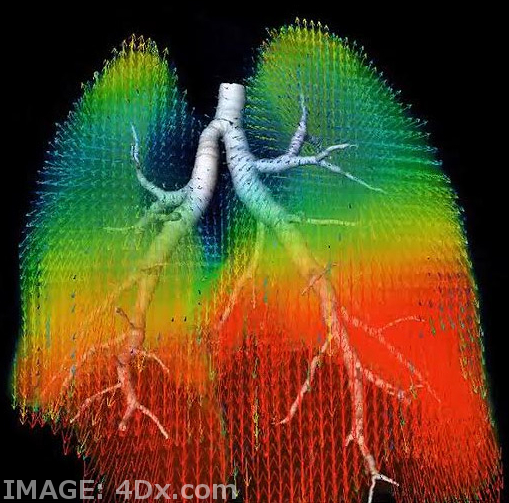CF detection boosted
 New technology is expected to improve cystic fibrosis detection and treatment.
New technology is expected to improve cystic fibrosis detection and treatment.
Research in mice led by Monash University has developed radical non-invasive X-ray technology aimed at helping diagnose, treat and manage cystic fibrosis.
Researchers can use the new tools to track the movement of air through the lungs, improving their capacity to assess lung function in both healthy and diseased lungs.
The research team, led by Dr Freda Werdiger from Monash University’s Department of Mechanical and Aerospace Engineering, was able to pinpoint the exact locations of abnormal airflow within lungs with CF-like disease, and better quantify the level of disease present.
The system involves a range of X-ray velocimetry (XV) techniques, and new ways to process data from XV.
“This analytical model provides a simple, easy-to-interpret approach, and one capable of being readily applied to large quantities of data generated in XV imaging,” says Dr Freda Werdiger from Monash University’s Department of Mechanical and Aerospace Engineering.
“Together these advances show the power of XV for assessing local airflow changes.
“We propose that XV should be considered as a novel lung function measurement tool for lung therapeutics development in small animal models, for CF and for other muco-obstructive diseases.”
The technology was designed and commercialised by Australian-based med-tech company 4DMedical, led by CEO and former Monash University researcher Professor Andreas Fouras.
The technology has since been upscaled for clinical use, and in the USA was recently given FDA approval for all respiratory indications in adults.
“To effectively diagnose, monitor and treat respiratory disease clinicians should be able to accurately assess the spatial distribution of airflow across the fine structure of the lung. This capability would enable any decline or improvement in health to be located and measured, allowing improved treatment options to be designed,” Dr Werdiger said.
“The success of XV lies in its ability to draw reliable and meaningful quantitative measures, and this study shows how this can be accomplished.
“In the future, these techniques can be expected to be applied to the numerical characterisation of CF lung disease in larger cohorts and other CF animal models.
“These methods allow analyses to be applied in a straightforward fashion and with minimal manual processing, to enable ongoing study and development of the treatment of CF and other respiratory diseases.”








 Print
Print